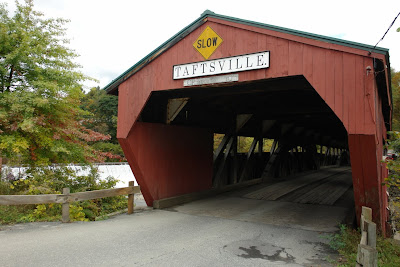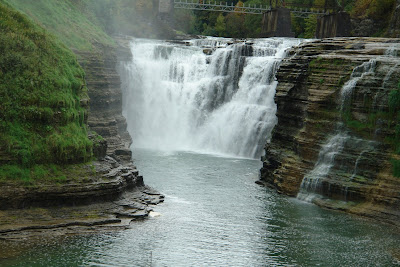Saturday Sept. 26, 2009: Honey, is that the toilet I hear running? You'd think a good Texas-sized plumber could have gotten that leak under control by now. Big Tom, where are you?
Niagara Falls turned out to be even more spectacular than I had imagined. I knew it would be big, but it's impressive to say the least. For those who have never visited, the falls are actually divided into an American and a Canadian side, divided into three very distinct falls by Goat and Luna Islands.
Accessible by bridge, Goat Island is perfectly situated between the two countries and offers a most beautiful vantage point known as Tarrapin Point. The Canadian Horseshoe falls, pictured above from Tarrapin point, is considerably larger and makes up approximately 90% of the total water flowing over Niagara. With a cresline of 2,500 feet, the horseshoe falls plunges 167 ft. to the river below dumping an amazing 675,000 gallons of water per second.
American Side: A view of the American side from Luna Island, a small off-shoot from Goat Island accessible only by footbridge. With a crestline of 1,100 feet, the water spills approximately 75,000 gallons per second 176 ft. to the waiting river below. From there, it flows into Lake Ontario and eventually the Atlantic Ocean by way of the St. Lawrence Seaway.
Walkway to Cave of the Winds: A trip to Cave of the Winds allows access to a view of the American Falls from the river level below and is well worth the time spent. Only from below can you see and feel first hand the legendary force of nature.
Hurricane Deck: A trip up to the "Hurricane Deck" is............well..................exactly as you would imagine. Frankly, I don't know why we even bother with the yellow ponchos. You're going to get soaked, but the experience is one you'll not soon forget.





































